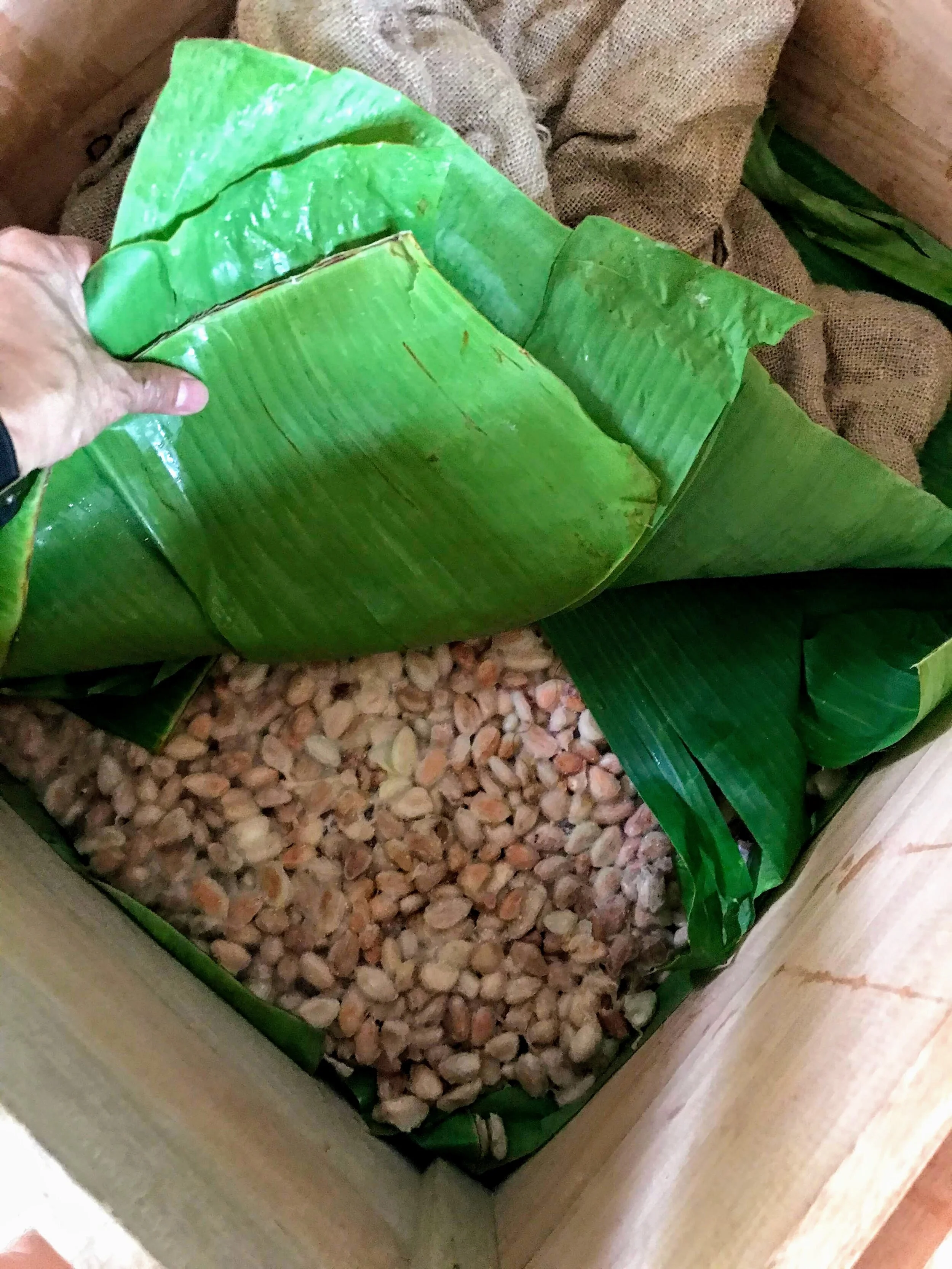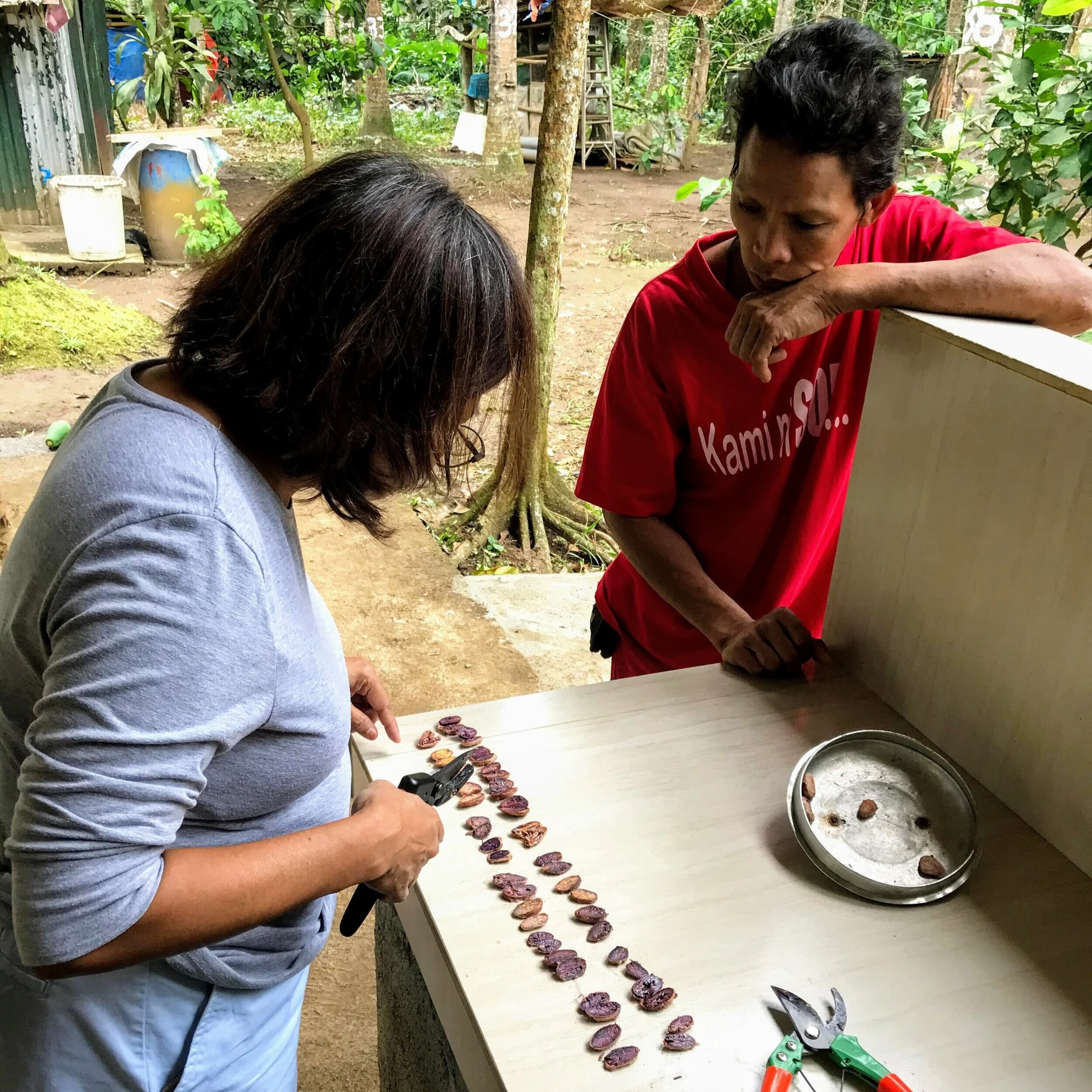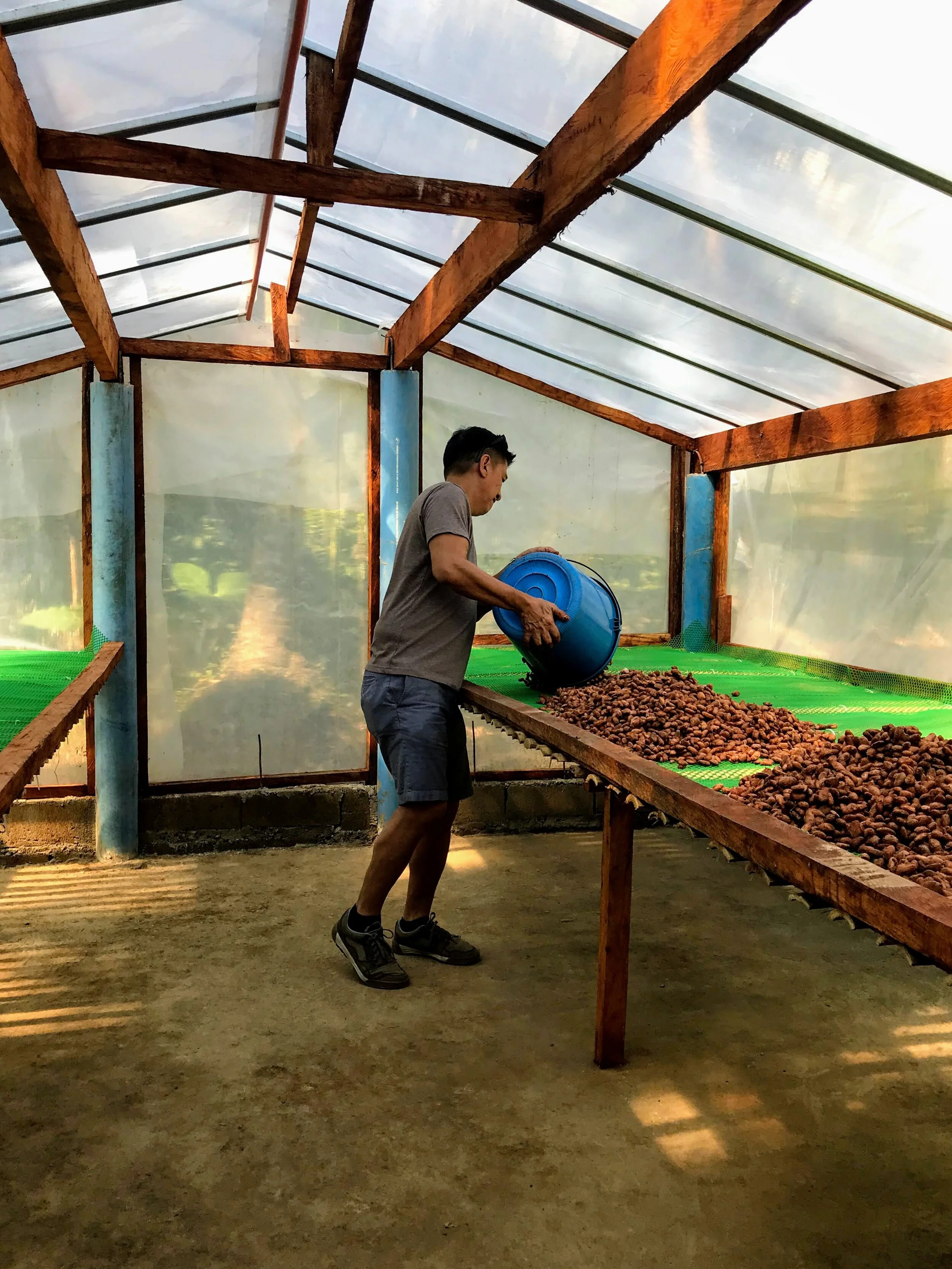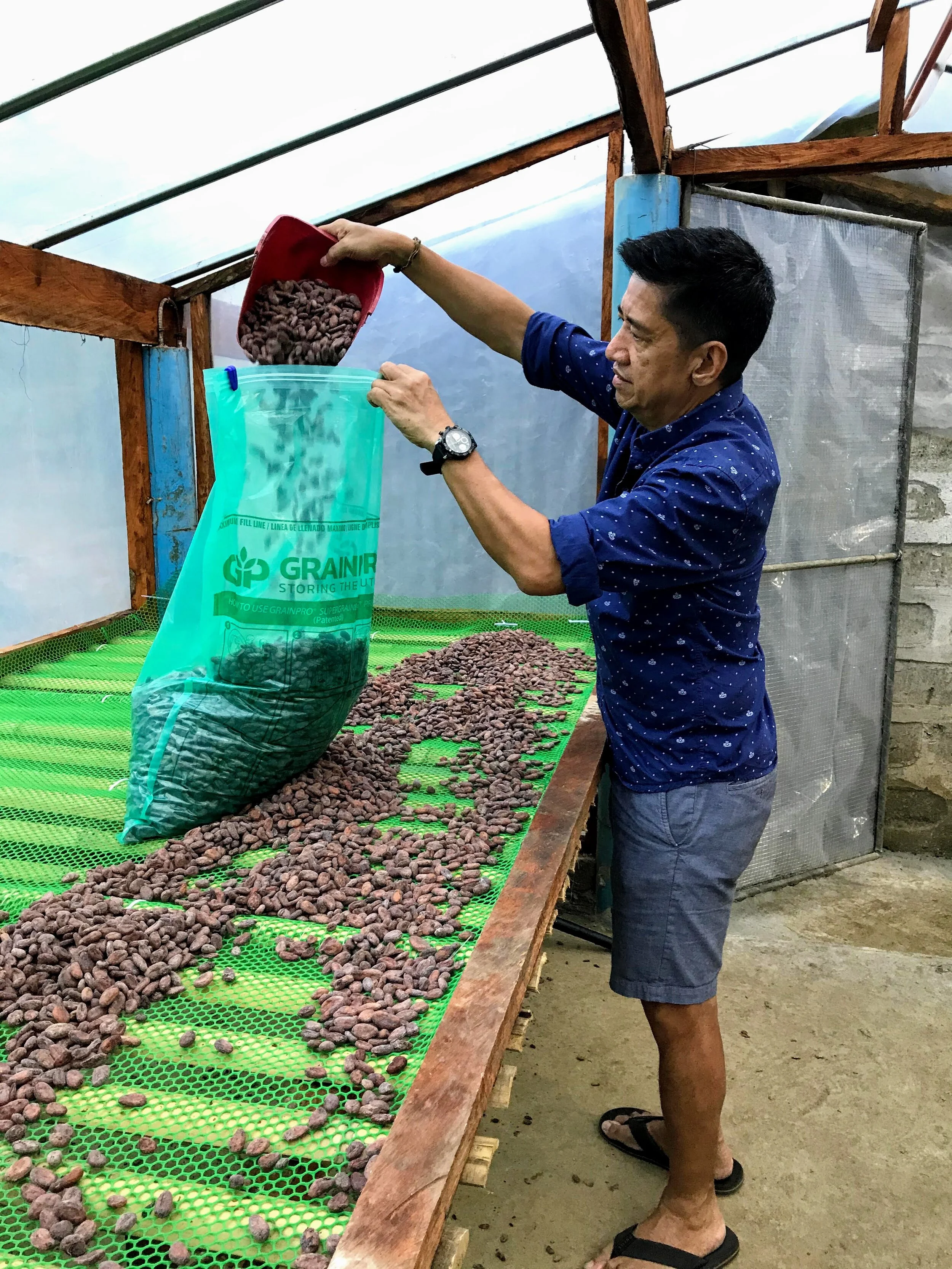
Fermentation Box and Solar Dryer
By January 2020, still within the cacao peak harvest season, we were ready to build our own prototype fermentation box and solar dryer. So we did. From the cacao harvested in Ka Ino’s Farm in Liliw and Cristy Goma’s Farm in Magdalena, and with the use of the newly built fermentation box and solar dryer, we were able to do several fermentation and drying batches before and even during the COVID-19 lockdowns. These gave us plenty of opportunities to learn and fine tune our processes.
Our fermentation box has two 2'x2'x2' square boxes separated by a removable wall of three panels in the middle. This facilitates the moving of beans from one box to the other. The sides can be removed as well if needed. The bottom has slats for the cacao juice to flow through.
The box is lined with banana leaves with the bottom side of the leaf touching the beans. A burlap sack is placed on top to keep the heat inside. A temperature probe (not shown) is inserted in the middle of the ferment.
During the first couple of days cacao juice flows down and through the bottom of the box then caught in the green plastic container underneath the box.
Only after the first two days of fermentation, do the beans get moved to the other box, then moving is done daily thereafter until fermentation is done.
After five days of fermentation, cut tests are done to decide if the beans are ready to be moved to the solar dryer. We don't expect the beans to go beyond seven days in the fermentation box.
When majority of the beans in the cut test sample of 30 beans look fully fermented. the beans are moved from the fermentation box to the solar dryer,
Beans are laid out on the green nets of our drying tables. It is important that the beans do not dry too fast during the first 3-4 days. If necessary we have to make the layering of the beans thicker or put in a pile to slow down the drying but at the same time making sure that molds do not develop.
The solar dryer has air vents at the top and at the sides. These vents can be left opened or closed depending on the weather.
Temperature and humidity are monitored inside the solar dryer.
Mixing the beans several times during the day prevents clumping and helps the beans dry out evenly and at the right pace.
Bean moisture content is taken once we feel the beans have the required dryness. Our target is a moisture content of 6-7% .
The dried beans are placed in Grainpro hermetic bags and stored in a clean, cool and low humidity storage.












